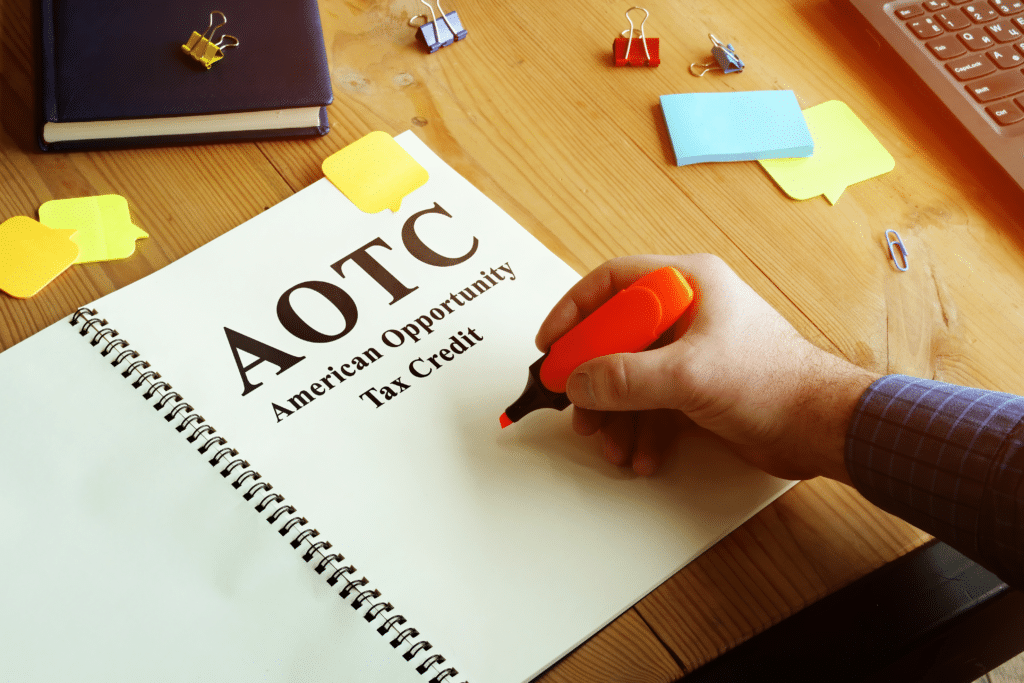Is the American Opportunity Tax Credit Actually Refundable? A Guide for Expats

If you’re pursuing higher education or helping a loved one in college, you’ve likely heard of various tax credits and deductions designed to ease the financial burden of education expenses. Among these is the American Opportunity Credit (AOC). One of the most common questions we receive about this credit is, “Is it refundable?” If you’re here with the same question in mind, read on to learn more about this tax credit and whether it can put money back in your pocket.
What are the Benefits of the American Opportunity Tax Credit?
The American Opportunity Credit aims to help eligible students or parents cover qualified educational expenses during the early years of higher education. It offers a generous credit structure, equal to 100% of the initial $2,000 spent on qualified education expenses, and an additional 25% of the subsequent $2,000. This combination allows for a maximum tax credit of $2,500 per eligible student, which makes it a substantial tax benefit for many families.
Is the American Opportunity Credit Refundable?
Yes, the American Opportunity Tax Credit is partially refundable. This means that if the credit reduces your tax liability to zero, you may be eligible to receive a refund of up to 40% of the remaining credit amount, with a maximum refund of $1,000 per eligible student.
To put it simply, if your qualified education expenses result in a tax credit of $2,500, and your total tax liability is $1,500, you could receive a refund of $1,000, provided you meet the refundable criteria.
Who Qualifies for the Credit?
The tax credit can be claimed by either the paying student or parents of a dependent student, provided that the eligible student meets the following criteria:
- The student is pursuing a course toward a degree or a recognized education qualification.
- The student is enrolled at least part-time for at least one academic period beginning in the tax year.
- He/She has not completed the first four years of higher education at the start of the tax year.
- He/She has not claimed the AOTC for more than four tax years.
- The student is free of a felony drug conviction at the end of the tax year.
It’s important to note that to claim the full credit, your Modified Adjusted Gross Income (MAGI) must be $80,000 or less if you’re a single filer or $160,000 or less for joint filers. If your income falls above these limits, you can only claim a small percentage of the credit.
Which Expenses Qualify for the Credit?
Tuition and Mandatory Fees: The credit covers the cost of tuition and any required fees paid to the educational institution. These fees are essential for attending classes and completing your course of study.
Required Course Materials: Expenses related to required course materials, such as textbooks and study materials, are also eligible for the tax credit. Whether you purchase them directly from the school or from external sources, you can include these costs.
Program-Specific Equipment: In some cases, specific equipment necessary for your program of study can be counted as qualified expenses. For example, dental equipment for dental students would fall under this category.
What’s Not Covered by the American Opportunity Tax Credit
Certain expenses do not qualify as eligible education expenses for the AOC. Here’s a breakdown of what falls outside the credit’s coverage:
- Expenses related to accommodations and meal plans, often referred to as room and board, do not qualify for the credit
- Expenses linked to transportation, such as commuting to and from the educational institution
- Payments for medical insurance, including student health fees
- Scholarships or grants to cover your education costs
- Any refunds provided by the school
- Any financial assistance provided by your employer for educational expenses
- Funds from a 529 savings plan to cover your education expenses
How to Make A Claim?
To claim the American Opportunity Credit, you’ll need to complete Form 8863 and attach it to your annual income tax return (Form 1040 or 1040-SR). The nonrefundable portion of the credit goes on Schedule 3, while the refundable portion goes on line 29 of Form 1040 or 1040-SR.
Have Questions or Need Assistance with Form 8863?
We understand that tax matters can sometimes be complex. If you have questions or need expert assistance in claiming the American Opportunity Credit, don’t hesitate to contact us at Tax Samaritan. Our team of experts is here to provide guidance and ensure you make the most of your tax benefits.


